The glut of fish-and-wildlife bullshit on social media is not just infuriating and depressing; it’s dangerous. It hurts fish and wildlife because it dumbs down an already fish-and-wildlife-dumb public, giving it false expectations and rendering it impotent for political influence and environmental activism.
Social-media viewers with even rudimentary knowledge of fish and wildlife have wretched at the AI renderings of extinct megalodon sharks swimming with scuba divers, fish drinking from straws, a rendering of a shark at least 40 times larger than an adult great white captioned “The encounter of the century: German fishermen capture a live megalodon in the North Sea,” snakes longer than football fields, warthogs skewering lions with their tusks, fledgling bald eagles in white-headed adult plumage, and such YouTube videos of snowy owls in flight carrying fledglings on their backs, a “large, giant fish [resembling no known species] moving with a crane on a ship” and “the largest seahorse in the world” also lifted by a crane.
Non-AI fish and wildlife memes and videos are no better or maybe worse: tame lions, bears and tigers embracing and licking humans, a whale (of varying sizes) said to be saying “thanks” for being freed from fishing gear by repeatedly breaching in varying light conditions against varying backgrounds, tame leopards cuddling with cows, a long-distance, fuzzy photo of a possum near a deer and said to be plucking ticks from its face.
Even more depressing than the graphic mendacities are the gushing, fawning responses.
Sharks don’t have bones, so when they’re hauled onto land they basically collapse, and their organs are apt to rupture under their weight. As I reported in my Hatch piece “It’s Time for America to Outgrow Shark Tournaments,” “Sharks are extremely vulnerable to being hooked and dragged around, and many die after release. The death rate for released great hammerheads is 93 percent (all other hammerhead species suffer similar mortality. Because of their cephalofoils (hammers) their mouths are small, so they can’t pump water through their gills as efficiently as other fish.”
So I felt obligated to comment on what may be one of the most viral YouTube videos ever posted on Facebook. It shows a hooked scalloped hammerhead shark dragged onto the beach, thrashing on the beach and in the surf, then dehooked and released. Two distinct population segments of scalloped hammerheads are listed as federally endangered, and two are listed as federally threatened. The limiting factors are overfishing and longline bycatch.
“That’s almost surely a dead shark,” I wrote. “Something like 93 percent of released hammerheads die within a few hours.”
The first time I saw the video (January 15) it had 54,000 Facebook likes and loves and 1,700 comments. On February 15, it had 208,002 likes and loves and 5,300 comments. Most of the comments are from people who love sharks but not enough to learn about them.

To wit: “Brave guys.” “I love when people help out the sharks instead of killing them.” “Love this. Restores my faith in human nature. Well done.” “Maybe the shark will remember and leave humans alone.” “Thank you guys. So brave of you!” “Wonderful save!” “Good hearts and brave hearts.” “Takes a real empathetic person to help out a shark. Well done.” “Fantastic effort guys.” “God bless all you guys.” And my favorite: “I liked how the shark understood what they were doing, then opened his mouth for them to take the hook out.”
I was sternly rebuked for suggesting that the shark was caught by the same person or persons who released it. Multiple commentators proclaimed that the shark just happened to be flopping on sand just as these good Samaritans passed by, who were also luckily toting long-handled wire cutters with which they “bravely” clipped off the hook which happened to be a shark hook. Examples: “Released? It was never captured.” “Wasn't released ... these good chaps took a nasty possible fish hook out of its mouth ... then let it swim away.” “Did you even watch [the video]?”
Responding to requests, I provided the source for the 93-percent mortality figure (with the link to my Hatch piece). But the vulnerability of sharks to catch-and-release was a fact that most shark lovers on the thread didn’t want to know.

There were several thoughtful, rational responses, but most of the 178 were churlish and appallingly ignorant. Examples: “Will you stop it. Let us enjoy the video!!” “100% of every animal dies, released or not.” “Look on the bright side why don’t you???”
Herewith, a much-curtailed sampling of responses to the AI rendering of a pair of bald eagles in adult plumage tending their fledglings which are also in adult plumage: “Wow. Such a gorgeous photo of these beautiful specimens: Jehovah's amazing creations!” “Love this picture.” “Beautiful family!” And so on.
For reasons I can’t grasp there is more social-media bullshit about possums than any other species — long memes about how we should not kill them because they protect us from Lyme Disease by eating “5,000 ticks a week,” because they don’t get rabies, because they eat “snakes and other pests,” because they don’t die if bitten by coral snakes. Even the National Wildlife Federation recycled the myth about Lyme Disease and ticks.

My standard response: Of course, don’t kill them. Possums are important parts in complex machinery we need and don’t understand. But we don’t help wildlife with feel-good fairy tales about it. Possums do get rabies, though rarely because of their low body temperature. They are not “good” because they rarely contract and spread rabies. They are not “bad” because they contract and spread leptospirosis, tuberculosis, relapsing fever, tularemia, spotted fever, toxoplasmosis, coccidiosis, trichomoniasis, Chagas disease, ticks and fleas. They do eat snakes, but snakes are not “pests.” They die when bitten by coral snakes. There is not a shred of field data to indicate possums eat more ticks (only the ones they happen to groom for their fur and skin) than other small mammals. Possums have absolutely no influence on tick populations or the incidence of tick-borne disease. This wives’ tale issues from Cary Institute junk science which purported to show possums eat 5,000 ticks a year (not “a week”). It was conducted in a pen with introduced ticks. The possums were hungry, so they ate some. The public can grasp that possums groom and eat ticks from their fur and skin. Talk of reservoir competent versus incompetent hosts and vector biology and predator/prey boom-bust cycles are too much for it to process. A legitimate study found no ticks in the stomach contents of 32 wild opossums.
The most frequent response to my possum post: “Why do you hate possums?” And the most frequent response to the Horse Sport link I provide: “So the researchers had to kill 32 beautiful possums.” (Well, no. All the possums in the study were road kills.)
A popular YouTube video tells the story of this brilliant, heroic park squirrel (depicted by three different species) who approaches a man and “begs him” to save her baby who is in the clutches of a house cat. The man assumes the squirrel is “asking for food.” But presently it “becomes obvious” to him that the squirrel needs his help. “The squirrel seemed to be an extremely smart animal who clearly couldn’t talk, but she understood everything.” The man kindly gives the squirrel food while the cat continues to maul her baby. After the mother squirrel has eaten her fill, the man follows her to the baby, flushes the cat, and calls Animal Rescue which “comes right away and takes both squirrels to a different, safer part of the park.” Much gushing from Facebook commentators.
Then there’s this image, lifted from the BBC’s “Frozen Planet,” of a pack of wolves trotting in single file through snow. It has been viral on social media for exactly a decade.

The caption reads: “The 3 wolves in the front are either old or sick. They walk in front to lead the way so as to set the pace. The 5 wolves behind them are the strongest. They protect the front in case of an attack. The middle group consists of newborns, pregnant females, and young wolves. They are fully protected from front as well as from back. The 5 wolves behind the middle group are also among the strongest; they protect the back side. The last and the lone wolf in the back is the leader. He ensures no one is left behind. He keeps the pack tight and cohesive. Also, in case of an ambush he remains active to run in any direction to protect his pack.”
Wolf lovers adore this meme, endlessly sharing it. And they don’t take kindly to being informed that it’s internet bullshit. Maybe wolves would do this if they were humans, but they don’t and aren’t. What they are is apex predators, rarely threatened by other species.
“Compassionate Conservation,” a euphemism for promoting alien species as “beneficial,” is all the rage on social media. No alien species superimposed on a native ecosystem ever “benefitted” it. Native ecosystems are priceless resources unto themselves, and they are flickering out because humans pollute them with aliens. Even in those rare events when the aliens do little damage, the ecosystems cease to be native and are therefore lost.
One of the more offensive and recycled memes promoting Compassionate Conservation is entitled “Wild horses and burrows [sic] are digging wells, giving water to parched wildlife .
Does the American public really believe that feral burros and feral horses are good for what ails the earth because the odd native critter sometimes drinks rainwater from holes they hack in otherwise intact wildlife habitat? Yes, as evidenced by the enthusiastic effusions from the meme readers.
Feral horses are even more ecologically destructive than feral burros and even more celebrated on social media. “They’re worse than cows,” declares retired Bureau of Land Management (BLM) biologist Erick Campbell. “When the grass between shrubs is gone, a cow is out of luck, but a horse will stomp that plant to death to get that last blade. When cows run out of forage the cowboys move them, but horses are out there all year. The BLM exacerbates the problem by hauling water to them.”
There are no “wild horses” in North America, only escaped and abandoned livestock and their descendants. But invariably, every meme celebrating “wild horses” makes three incorrect assertions: 1. that their bad rap issues entirely from cattle-industry lust for more grassland (most feral horses infest range that can’t support cattle); 2. that they’re good for native ecosystems because they loosen and aerate the earth (feral horses and burros are the only animals extant in the North American wild with meshing upper and lower teeth and solid hooves, adaptations devastating to most of our native vegetation); and 3. that “wild horses” are “native wildlife” deserving of protection under the Endangered Species Act.
This last fiction issues from Compassionate Conservation guru Jay Kirkpatrick, an animal-rights darling and collaborator. Kirkpatrick bases this assertion on the fact that a smaller, very different equid inhabited North America before going extinct 12,000 years ago. Assigning native status to feral domestic horses because an extinct equid was native to North America makes as much sense as assigning native status to elephants because wooly mammoths were native to North America.
Here’s a social-media caption that appears under an image lifted from “Our Blue Planet,” a BBC documentary series narrated by Sir David Attenborough: “This is what an elephant herd is supposed to look like -- Tsavo, Kenya in the 1950s.
What the ancient photo really shows is everything an elephant herd should not look like — an irruption of malnourished animals pounding the last vegetation from former habitat. As a result, some 60,000 elephants died in Tsavo National Park.

“The image,” reports one exposé, “almost always attributed to Tsavo with varying dates attached, is filled with elephants moving from left to right, seemingly hundreds of them. Although the photo has existed for decades, it resurfaces periodically, often posted on ‘environmental’ or ‘nature’ styled Facebook pages with a caption referring to the past glory of elephant herds, where it then is shared often tens of thousands of times.”
Such is the influence of social media on the American public’s ecological literacy.
Viral posts supposedly reporting on and celebrating fish and wildlife aptly validate Mark Twain’s observation that “A lie can travel halfway around the world while the truth is putting on its shoes.”

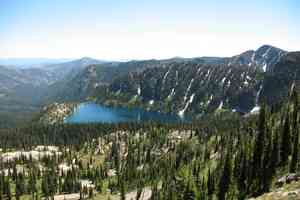


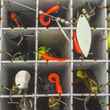



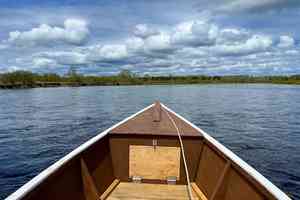
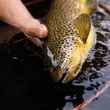

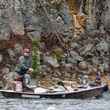
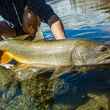
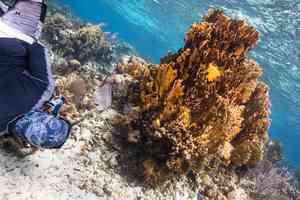
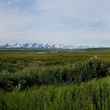
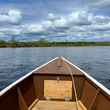
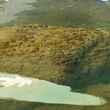
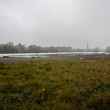

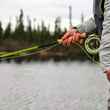

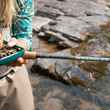
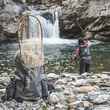

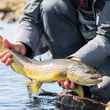
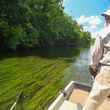
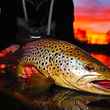
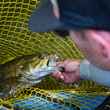

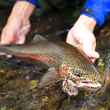
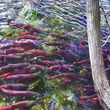
Comments
Kirk Deeter replied on Permalink
You're right. I agree with 99% of what you say here. It had to be said, and my hat is off.
Wayne Spencer replied on Permalink
Stick to it Ted. As a wildlife biologist myself, I often comment on absurd photos and videos about fish and wildlife, but it can get tiring. Critical thinking has largely been purged on the internet.
Jon B. Tobey replied on Permalink
One of the things I miss most since getting my FB account hacked and canceled is interacting with you Ted. Your willingness to take on not only the absurd, but also the status quo is inspiring. As always, half entertaining and half educational.
I was shocked that there are not more comments here. Perhaps the silence speaks more to our own conflicted feeling about catch-and-release and "native" species in fly fishing than it does about your piece.
Pages